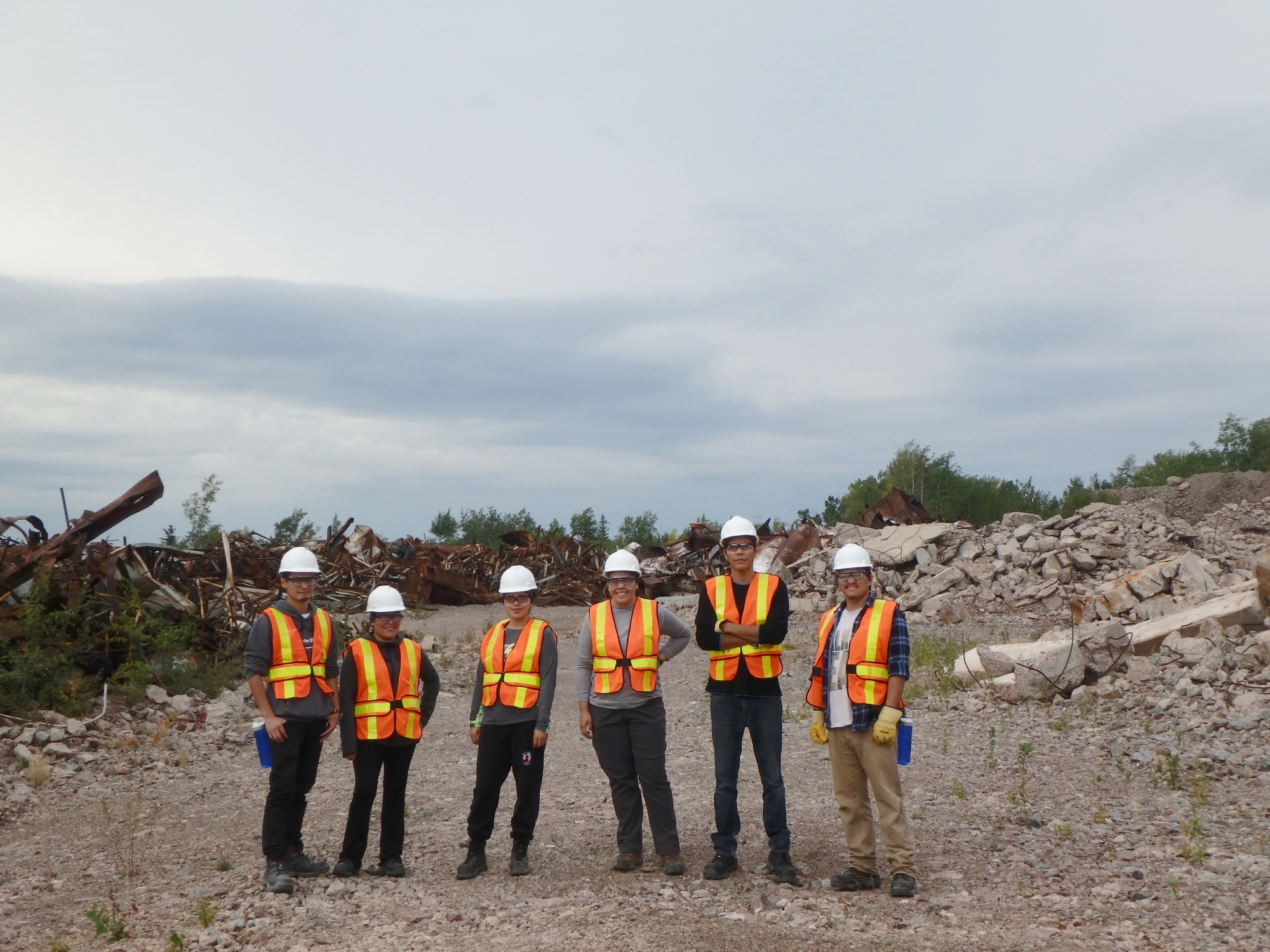
This is a contributed blog post written by former SRC employee, Thomas Lavergne.
Giving students the opportunity to try a hands-on experience in science is something we never shy away from. We love science. So, when we heard that youth in northern Saskatchewan were looking for opportunities to gain experience in science-related fields, we took on the challenge.
SRC manages the remediation of 37 abandoned uranium mine and mill sites in northern Saskatchewan. The remediation of these sites is known as Project CLEANS or the Cleanup of Abandoned Northern Sites.
We spend a lot of time in the Athabasca Basin (where the remediation work takes place) and have developed strong and meaningful relationships with residents through our work. We’re always looking for ways to get the communities involved in Project CLEANS. In this case, we saw an opportunity to provide a unique experience in the environmental sciences.
Student Environmental Monitoring Program
Working with the Prince Albert Grand Council (PAGC), we created a program for young adult students that provides a broad range of environmental monitoring experience. We also wanted to give students a hands-on experience, so we aligned the program with our monthly surface water monitoring at the Gunnar Mine and Mill Site. We conduct environmental monitoring during the construction phase of the project to determine if remediation activities are adversely impacting the water quality on and adjacent to the site.
We launched the Student Environmental Monitoring Program as a pilot project in August 2016 with four students. Our goal was (and continues to be) to raise awareness and interest in environmental monitoring, with the hope that students will seek out other learning opportunities in the field. The program was well received by the students, their communities and the various stakeholders in Project CLEANS. As such, SRC, with support from the PAGC and the Gabriel Dumont Institute, ran the program again in 2017.
A closer look at the 2017 program
The Gunnar Mine and Mill Site is in a remote location, so the students fly to the site in the summer, accompanied by SRC employees. I facilitated the program at site with two other SRC employees (who are past participants in SRC’s Aboriginal Mentorship Program). Our goal was to provide meaningful learning opportunities that were interesting to the students, which was challenging because we also had to keep everyone safe and stay within the program scope.
As we drove from the airstrip to the Gunnar camp, the students asked many questions related to what they were seeing onsite. They were surprised at the scale of the impacts from the historical mining activities. After getting settled at the camp, the group learned more about the history of the site and the remediation plans.
On the morning of the second day, the students participated in a site safety orientation with the onsite remediation contractor. They learned about the hazards of working on an active remediation site and how to safely work at one.
Later, the students learned about surface water sampling procedures, and got to collect water samples on site, which was an activity none of them had done before.
The third day started with a hike to some of the undisturbed parts of the site. The students learned to identify different ecosites by observing the variety of vegetation. They were also introduced to soil science by the onsite environmental monitor.
In the afternoon, the students collected offshore water samples from a boat on Lake Athabasca, and participated in a groundwater sampling demonstration.
The offshore sampling was many of the student’s favourite part of the program because they saw a beautiful part of the Athabasca Basin from the water. Others really enjoyed groundwater sampling, because it was a completely unique experience.
“It has definitely raised my interest in this field. I have always had interest in a mine related career, this is a field that I would consider.” – Student in the program
The group completed the remaining surface water sampling on the last day. We visited different areas of the site and discussed various aspects of environmental science and remediation, including erosion and environmental controls, revegetation, contaminant transport, soil science and ecology.
Project Collaborators
SRC collaborated with the Prince Albert Grand Council and the Gabriel Dumont Institute early in the process to help make the program a reality and a valuable experience, right from the start. They recruited students, and provided funding to compensate the students for their efforts.
The contribution of the project collaborators was essential to having a successful program outcome. SRC is grateful for their support.
Program Feedback
The program was designed to spark interest in environmental sciences, and in particular, environmental monitoring. The students’ response was overwhelmingly positive. Based on the feedback received from the participants, we feel the program was successful.
 Seeing the excitement on their faces each time they learned something new was very gratifying. The thought of having a positive impact on people’s lives was extremely rewarding for me.
Seeing the excitement on their faces each time they learned something new was very gratifying. The thought of having a positive impact on people’s lives was extremely rewarding for me.
Best of all, many of the students expressed an interest in pursuing further training in environmental sciences, and all the students enjoyed their time spent at the Gunnar Mine and Mill site.
